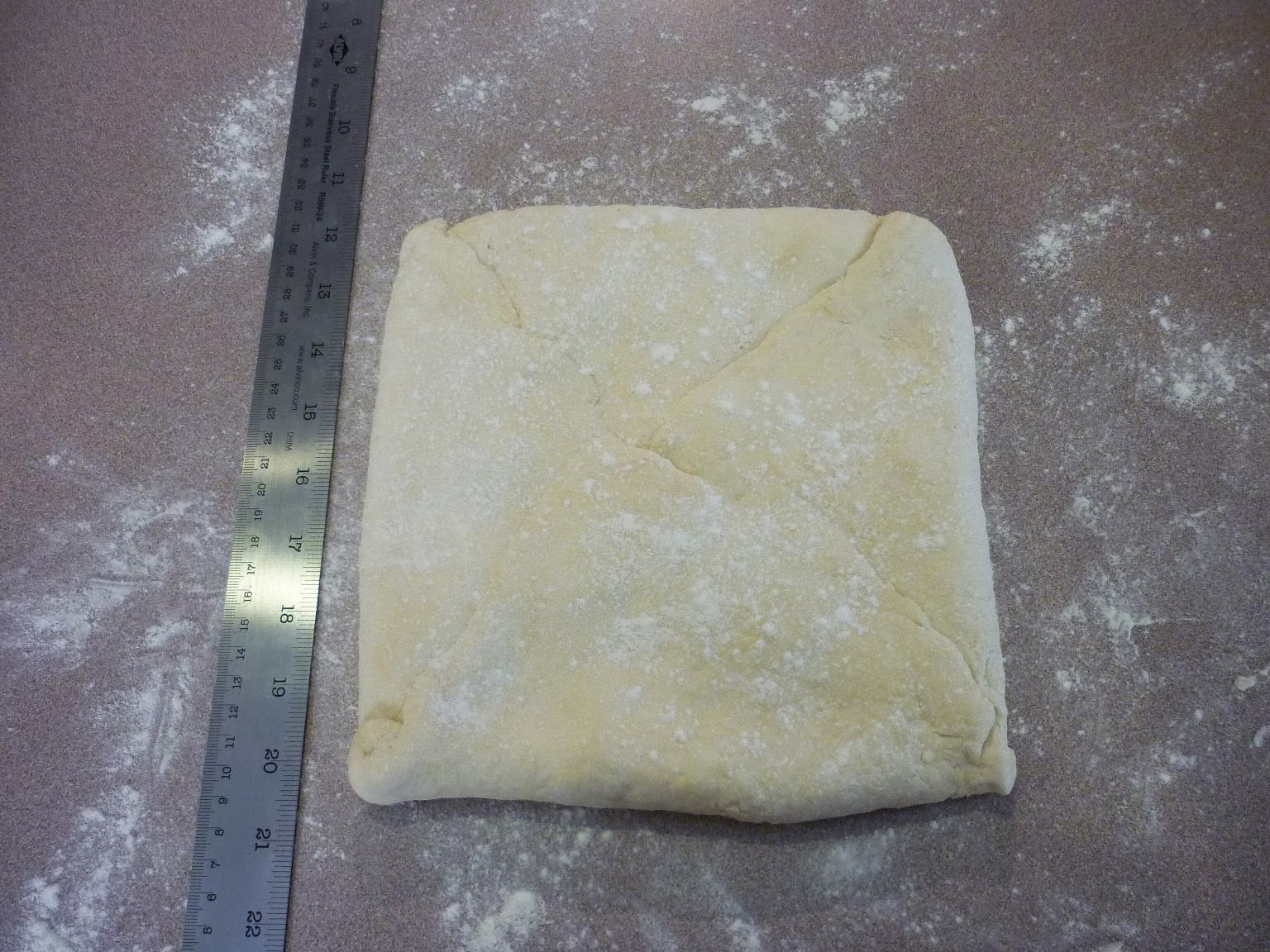 |
| gorgeous and delicious |
 |
| look at those layers...beautiful! |
The recipe is adapted from Martha Stewart's and you can use store-bought puff pastry or homemade. I've made homemade puff pastry a few times recently, once for Thanksgiving and once to make pithiviers. You can see the step-by-step directions for my puff pastry dough here if you want to make your own...try it, it's fun!
Ingredients
1 sheet homemade puff pastry (approx. 1 pound), or use frozen store-bought, thawed
all-purpose flour, for rolling out the dough
1 egg, lightly beaten, for egg wash
1/2 c. homemade or good-quality, unsweetened, applesauce
2-3 apples, peeled and cut into thin slices (use Granny Smith or other firm, tart apples)
juice from 1/2 lemon (or as much is needed to prevent the apples from browning
2 t. unsalted butter, melted
2 t. sanding or turbinado sugar
2 t. apricot preserves
1 tablespoon water
Method
Roll out your puff pastry sheet to approximately 14x16 inches. Trim 1 inch off from each side and carefully set aside. Put the large sheet of puff pastry on a parchment paper lined sheet pan.
Using the egg wash, carefully brush the outer 1" edge of the large pastry and place the 1 inch strips on the edge. Press gently with your fingers to seal and create an outer crust. You'll need to trim the strip you cut from the short ends so it fits back onto the larger piece of dough. Be careful with the egg wash so you don't let any drip over the cut edge of the dough. If the egg drips over the side, it will seal together all of your lovely puff pastry layers when you bake the tart.
Using the tines of a fork, prick the middle part of the pastry all over so it won't rise during baking. Put the puff pastry into the fridge to chill while you prepare the apples.
 |
| my lovely sheet of homemade puff pastry |
The ingredients for the apple filling...so simple!
 |
| mise en place for the filling |
Preheat the oven to 400 degrees while you prepare the apples.
Peel and core your apples. Cut the apples into thin slices and toss with a bit of lemon juice to they do not discolor.
 |
| slice, toss with lemon juice...and done! |
Remove your puff pastry from the refrigerator and spread the applesauce over the inner (pricked) area. It should be chilled and very firm at this point, so you can do this quickly and not worry about being super gentle.
 |
| spreading the applesauce over the chilled dough |
Layer the apple slices over the applesauce in whatever pattern you like. For expediency's sake, I just layer them like this, slightly overlapping.
Brush the apples in the middle with the melted butter.
Brush the outer 1" crust strip with the egg wash. Again, be careful not to let the egg wash drip over the side edges or it won't puff properly.
Sprinkle the sanding sugar over the entire tart - the apples and the crust.
 |
| brushing the apples with melted butter |
 |
| brush the outer crust with the egg wash, then sprinkle the sanding sugar over the entire tart |
Bake the tart at 400 degrees for 20 minutes, until the edge crust starts to puff up. Reduce the temperature to 375, rotate the pan from front to back, and bake for an additional 25 or so minutes until the crust is golden brown.
During the last 10 minutes of baking, prepare the apricot glaze. Heat the apricot preserves and tablespoon of water in a small saucepan over low heat, stirring with a spoon or heat-proof spatula until they are completely combined and the mixture is hot. Remove from heat and set aside until the tart is done.
 |
| the baked tart |
When the tart is done, gently remove to a cooling rack. You should be able to use the parchment paper to (gently!) lift the tart out of the sheet pan and onto the rack and then slide the parchment paper out from under.
Generously brush the apples with the apricot mixture.
Serve at room temperature with a small scoop of vanilla ice cream, whipped cream, or just enjoy plain.
 |
| so elegant...perfect for a party! |
Bye for now...





































